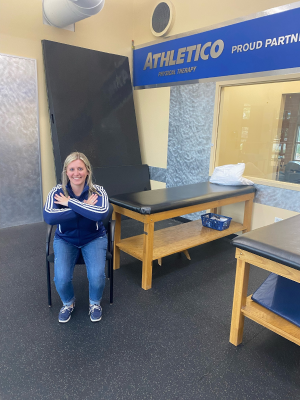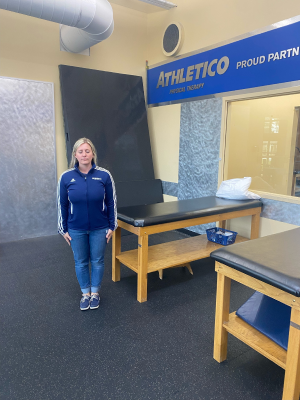
A Physical Therapist’s Guide to Balance Training
1 CommentKimberly Smith is the Assistant Manager of Clinical Programs, IL Regional Coordinator – Vestibular/Concussion Program
If you or someone you know has fallen, you are not alone. Balance quickly diminishes after the mid-50s, increasing the risk for falls and other adverse health outcomes. According to the National Institute on Aging, 1 in 3 individuals will suffer a fall each year. The good news is it is never too late to improve your balance and fitness to decrease these risks. This may be as simple as making minor changes, just a few minutes a day, and using your local Physical Therapist as a resource! The pandemic has not helped reduce the falls problem, as most of the population 65 and older became stationary, less active, and was not challenging their bodies to the full potential. As part of Falls Prevention Awareness Month this September, we would like to highlight the importance of early detection and prevention for yourself or a loved one.
In our Athletico clinics, our Physical Therapists use researched and validated tests to assess how someone moves. We are movement experts and can recognize deficits by observing specific movement patterns and balance strategies. Some tests you might have heard of include “Timed Get Up and Go”, the 6-minute walk test, or other functional balance tests, including Berg or Tinetti.
Consider trying some of the tests and exercises below at home to assess your need for an evaluation by a Physical Therapist and further balance training to decrease your fall risk.
Functional/Dynamic Exercises
Sit to Stand: Sit in a firm chair, feet planted flat on the ground, cross hands across your chest, and attempt to stand. The difficulty level of that exercise could suggest you need further strength training.
Walking with head turns: In the comfort of your home, look to the right while walking 3 steps, then look left for three steps, assessing your feeling of sturdiness. A sense of imbalance would indicate the need for further assessment and intervention.
Tandem walking: Attempt to walk as if you are walking on a tight rope, one foot directly in front of the other, touching heel to toe. This can be a challenging for most people but can be improved with skilled therapy and practice.
Static Exercises
Recent research suggests static, or standing still, balance testing can predict survival in middle-aged to older adults.
Standing eyes closed: Begin standing at a counter in a comfortable resting position, feet at hip-width apart. Remove your hands from the counter and close your eyes. If you feel yourself swaying, you need to grab onto the counter or open your eyes within 30 seconds. This indicates that you would benefit from further balance training.
Tandem Stance: Stay near the counter and stand with one foot directly in front of the other, with the heels of the front foot touching the toes of the foot behind. Taking your hands off the counter, assess your ability to maintain this position. Less than 20 seconds would suggest further training is needed.
Single leg balance: Try lifting one foot off the ground and maintain a firm, solid stance on 1 foot for up to 10 seconds. A recent article published by Araujo CG et al. suggests that your ability to stand on one leg for 10 seconds without failing may predict how long you will live.
Physical Therapy for Balance
In the United States, injury incidence after a fall continues to increase yearly at a rate of 1.5%, which correlates to 106,000 new fall injuries nationally, or more than $1 billion in fall injury spending.3 As Physical Therapists, we continue to be the frontline medical professionals to help assess someone’s overall health and wellness. Our balance tools can help with early detection and predict outcomes of one’s life expectancy! If you have questions about your balance, schedule an appointment at Athletico. Our experts can help determine what may be causing your balance issues and provide recommendations for the best course of care.
The Athletico blog is an educational resource written by Athletico employees. Athletico bloggers are licensed professionals who abide by the code of ethics outlined by their respective professional associations. The content published in blog posts represents the opinion of the individual author based on their expertise and experience. The content provided in this blog is for informational purposes only, does not constitute medical advice and should not be relied on for making personal health decisions.
References:
1. Araujo CG, et al. Successful 10-second one-legged stance performance predicts survival in middle-aged and older individuals. British Journal of Sports Medicine. 21 June 2022 doi: 10.1136/bjsports-2021-105360
2. Nia.nih.gov
3. Hoffman G et al. Incidence of and county variation in fall injuries in US residents aged 65 years or older, 2016-2019. Jama Netw Open. 11 February 2022. https://jamanetwork.com/journals/jamanetworkopen/fullarticle/2788979







1 Comment
Jean Daniels
Excellent information for me to use—thank you!! I have saved numerous of your resources for reference.